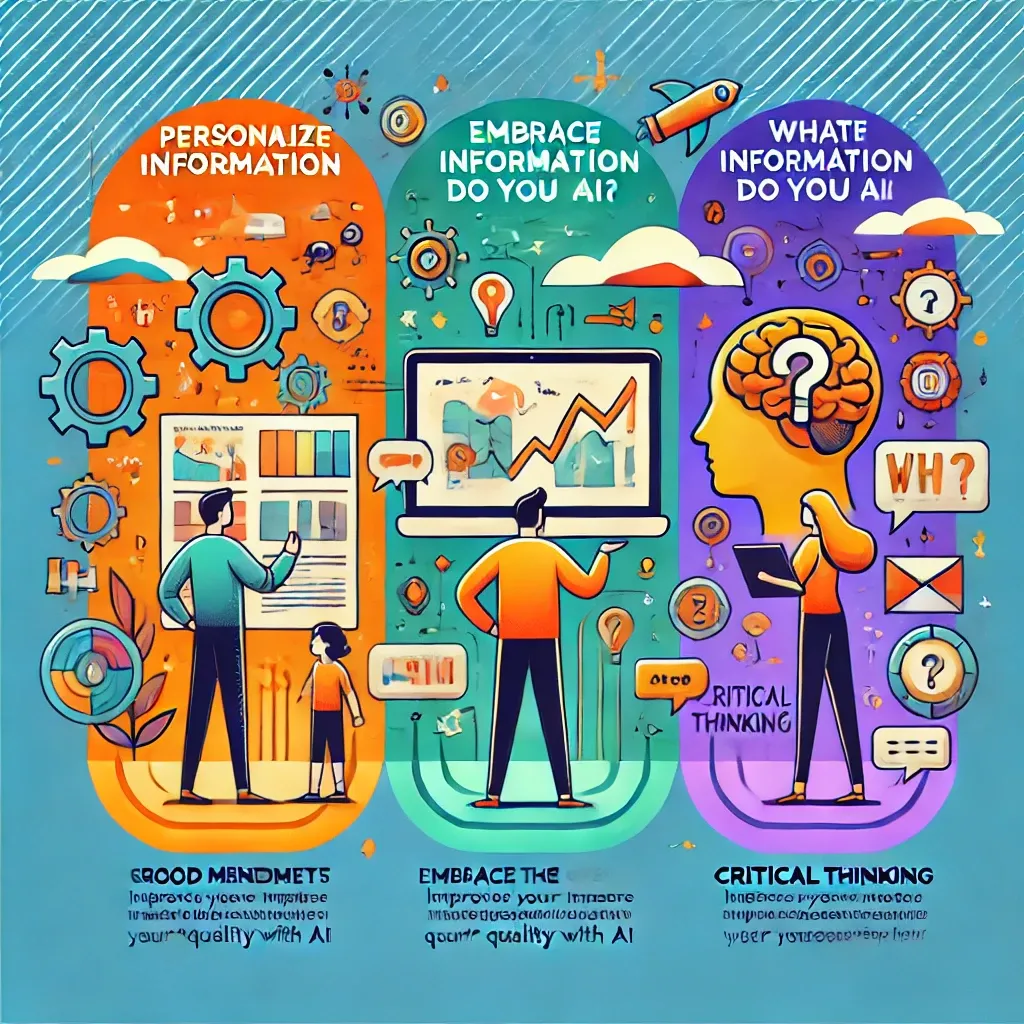Three important mindsets for effective interaction with AI tools, emphasizing the importance of personalized prompts, asking reverse questions, and critical thinking to improve response quality and increase productivity.
In the education system, we are often taught to answer as many questions correctly in the shortest amount of time as possible. The best students are the ones who provide the most accurate answers. However, with the advent of AI tools, the game has completely changed. Instead of being the best answerer, you now need to be the best questioner. The quality of your work increasingly depends on how you command AI. But how can one transition from a good answerer to a good questioner?
The Importance of Mindset
The first step is to change your mindset. Do you remember how the goal of achieving high scores in school was like? You practiced as many exam questions as possible, hoping that you wouldn’t be surprised on the exam day. While this method may yield high scores in school, it is not effective in the workplace.
Consider the unpredictability of events like the COVID-19 pandemic. You cannot foresee every surprise that may affect your business. What you need is to cultivate a strong mindset that allows you to flexibly address unforeseen challenges. So, what are the three fundamental mindsets that will help you ask smarter questions when working with AI?
1. Personalize Information
The first mindset is to personalize the information you want to receive from AI. Imagine describing a MacBook to a five-year-old, a graphic designer, and a technical staff. Can you convey the same content? Certainly not. For each audience, we will react differently. Similarly, by providing more context about yourself, AI can tailor its response based on your level of understanding and preferences.
For example, if you are a five-year-old, AI might describe a MacBook as a larger iPad with a keyboard. If you are a graphic designer, it will emphasize the sharpness of the Retina display. And for a technical person, it will discuss the machine’s specifications. In short, to get specific answers relevant to your situation, you must personalize your prompts.
Example of Personalizing Prompts
Instead of asking, “How can I improve my marketing strategy?”, you might say, “I work for a startup in the educational technology sector. We are about to launch an English learning app for children aged 5 to 8. How can I improve our marketing strategy to attract parents and teachers?” The second prompt provides more actionable insights than the first, which is too vague.
When asking AI to summarize any content, such as a report, don’t just say, “Please summarize the attached content.” Instead, say, “Please summarize the attached content and point out the 5 most useful points for me in my role as Marketing Director at a bespoke fashion company for people over 50.” This way, you get targeted suggestions that you can explore further.
2. Embrace the Unknown
The second mindset is to recognize that you don’t know what you don’t know, and every day is a new opportunity to discover more. Instead of always asking AI, why not try asking it back? A common mistake many people make is expecting a perfect answer from the first prompt. When entrusting a task to someone, your request must be specific and detailed, providing them with enough resources to complete the task accurately.
To simplify this process, add a line at the end of your initial prompt: “What information do you need to provide a better answer? Please ask three questions.” Choosing three questions creates a balance - too few may lack detail, while too many may lead to unnecessary questions.
Using the previous marketing strategy prompt, you can add the reverse question. This approach often leads to more practical responses, as it encourages AI to clarify its understanding and gather necessary details.
3. Critical Thinking
The third mindset is critical thinking. A good idea or answer is only valuable if it is viewed from multiple perspectives. Critical thinking allows you to challenge new ideas, examine them from different angles. When you’ve spent a week analyzing a project, feeling confident in the solution you’ve chosen, your boss can point out flaws in just ten minutes.
Now, you can use AI to enhance your critical thinking. When you have an idea or receive feedback from AI, ask AI to evaluate the idea critically: “As a harsh critic, please evaluate this idea or answer and convince me why it is good or not.” This method can help you refine your ideas and make informed decisions.
Example of Critical Evaluation
If AI suggests a free trial program for your marketing strategy, you can ask AI to evaluate this idea. It can highlight three advantages and three disadvantages, giving you a balanced view to consider.
Conclusion
Transitioning from a good answerer to a good questioner is entirely feasible. The important thing is to start - start changing your mindset, apply new methods in your work, and share your knowledge with others.
In summary, the three mindsets we discussed today are:
- Personalize your prompts
- Embrace the unknown
- Think critically
If you want to learn more, search for these keywords on Google or YouTube. This is the best next step when introduced to a new concept.

